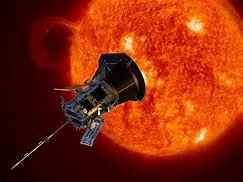Islamabad, Dec 27: NASA’s Parker Solar Probe achieved a groundbreaking milestone on December 24, 2024, by coming within 3.8 million miles of the Sun, setting a record for the closest distance any spacecraft has traveled to the star. This historic event occurred during Parker’s 22nd close approach, surpassing its previous record of 4.51 million miles (7.26 million km).
Key Highlights:
- Speed Record: Parker zipped past the Sun at a staggering 430,000 mph, making it the fastest human-made object.
- Heat Resistance: The probe’s carbon composite heat shield keeps its internal temperature at an average of 85°F (29.4°C), even in extreme solar heat.
- Scientific Contribution: Parker traced the flow of heat from the Sun’s surface into its corona, aiming to uncover why the corona is hundreds of times hotter than the surface.
Journey Overview:
Parker uses Venus’s gravity for slingshot maneuvers, gradually closing in on the Sun. NASA’s careful trajectory planning during its final Venus flyby in November enabled this record-setting proximity.
Future Plans:
The probe will remain in its current orbit, conducting four more close solar passes in March, June, September, and December 2025, marking the final year of its mission.
Importance to Science:
The Sun is the only star that can be studied up close. Parker’s findings not only enhance understanding of solar processes but also offer insights into the behavior of distant stars.
With its continued resilience and unmatched achievements, the Parker Solar Probe stands as a monumental success in space exploration.









